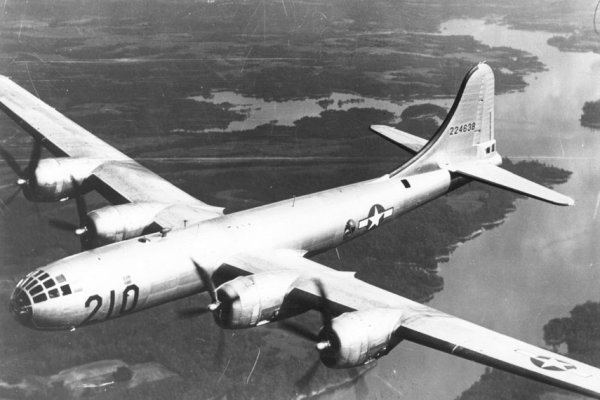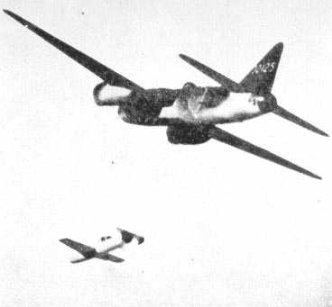ACUFO-1945-05-17-SOUTHNAGOYA-6
The Tactical Mission report for mission 176 by the 21st Bomber Command of the U.S. Army Air Forces documented the air raid of the night of May 16-17, 1945, over the South Nagoya urban area in Japan. Several cases of “balls of fire” and other oddities observed by the aircrews of the B-29's bombers appear in this report.
In one of these instances, we are told:
“b. at an altitude of 16,000 feet, 1 ball of fire followed a B-29 at 5 - 8 o'clock low for 10 minutes.”
| Date: | May 17, 1945 |
|---|---|
| Time: | Night. |
| Duration: | ? |
| First known report date: | May 17, 1945 |
| Reporting delay: | Hours. |
| Country: | Japan |
|---|---|
| State/Department: | Aichi |
| City or place: | South Nagoya |
| Number of alleged witnesses: | 1 to 11 |
|---|---|
| Number of known witnesses: | ? |
| Number of named witnesses: | 0 |
| Reporting channel: | Military mission report. |
|---|---|
| Visibility conditions: | Night, undercast. |
| UFO observed: | Yes. |
| UFO arrival observed: | ? |
| UFO departure observed: | ? |
| UFO action: | Follows during 10 minutes. |
| Witnesses action: | |
| Photographs: | No. |
| Sketch(s) by witness(es): | No. |
| Sketch(es) approved by witness(es): | No. |
| Witness(es) feelings: | ? |
| Witnesses interpretation: | ? |
| Sensors: |
[X] Visual: 1 to 11.
[ ] Airborne radar: [ ] Directional ground radar: [ ] Height finder ground radar: [ ] Photo: [ ] Film/video: [ ] EM Effects: [ ] Failures: [ ] Damages: |
|---|---|
| Hynek: | NL |
| Armed / unarmed: | Armed, 12 Browning M2 12.7 mm machine guns. |
| Reliability 1-3: | 3 |
| Strangeness 1-3: | 1 |
| ACUFO: | Moderate strangeness. |
[Ref. aaf1:] U.S. ARMY AIR FORCES:
This report was of the 21st Bomber Command Tactical Mission No. 176, flown 16-17 May 1945, the target being the Mitsubishi Aircraft Works at the South of the Nagoya Urban Area, Japan.
The units involved were the 58th, 73rd, 313th and 314th Bombardment Wings. The take-off was at Iwo Jima, the initial point (IP) was at Biwa Lake, landfall was at O Shine.
The targets were first reached at 161705Z and last at 161930Z, i.e. in local time, first at 02:05 a.m. on May 17, 1944, and last at 04:30 a.m. on May 17, 1944.
The report below appeared in the “Enemy Air Opposition” part of the report. This part included information about the enemy aircraft encountered during the mission and what these did.
In this “Enemy Air Opposition” part, there was also a section titled “Observations of Unusual Types”, followed by a section “Balls of fire”, in which several observation of what was thought to be other things than planes, rockets, flares and flak, appeared. It included:

|
[... other “balls of fire”...]
b. at an altitude of 16,000 feet, 1 ball of fire followed a B-29 at 5 - 8 o'clock low for 10 minutes.
[... other “balls of fire”...]
Anti-aircraft was described as meager and inaccurate, with large percentage of B-29's reporting no antiaircraft on the target. Searchlights rarely penetrated the undercast, and when they did, “dispensing of rope and desynchronisation of the engines proved effective.”
Out of the 468 U.S. Army aircraft over all targets, none were lost and 20 were damaged.
An estimated number of 30 enemy aircraft were reported, making only 11 attacks on the B-29's. 6 B-29's were damaged by these enemy aircraft but none were destroyed. 5 of the enemy aircraft were reported to carry a searchlight.
7 cases of “balls of fire” reports were included in the report of this mission - the summary said “eight or ten” - in the specific section “Balls of fire” part of the mission reports, with also one case of “possible jets” (Japan had no jet planes) and 2 “possible Baka” (Japanese piloted rocket flying bomb) in the “Observation of unusual types” section. This case file is about 1 of these observations, I documented each case of this mission in its own file.
The Boeing B-29 “Superfortress” was the heaviest bomber of the U.S. Army Air Forces, used in operations from May 8, 1944 and on. Its maximum speed was 574 km/h.
Its defensive armament was 12 Browning M2 12.7 mm machine guns.

|

|
“Baka”:
The Yokosuka MXY-7 Ohka was a Japanese rocket plane used for suicide “Kamikaze” missions at the end of World War II. It carried an explosive charge of 1,200 kg, constituting a flying bomb, it was dropped from the belly of a twin-engine Mitsubishi G4M “Betty” bomber. Guidance was provided by the pilot alone, the machine flew at 900 km/h and was not very maneuverable, it is known that many “Baka” had exploded in flight before reaching their target. The first use took place on March 16, 1945, the last recorded use took place on June 22, 1945.
In historical sources, all “Baka” attacks were carried out by day and against ships. I haven't found any mention of a nighttime “Baka” attack on bombers.
Below: photo of the drop of a “Baka” by a Japanese bomber, by day:

|
With the increase in cases of “balls of fire” during U.S. Army Air Forces missions over Japan in 1944-1945, some analysts had thought that this could be the explanation for the so-called “balls of fire”, or at least, some of them. At the time, this craft was new and little known. Subsequently, historical sources do not mention any flight of “Baka” by night. Some witnesses also explained that the “flame” of the Baka's rocket engine would have varied depending on the viewing angle while the brightness of the “balls of fire” did not change, even when they passed the B-29s. It was also found that the supposed “Baka” never attacked any of the B-29s. In some cases, one can even wonder if Baka reports were not misinterpreted “balls of fire.”
It should be noted that historical sources do not report “Baka” being dropped at night against American bombers, only daytime missions against the American Navy.
The Mitsubishi G4M “Betty”, carrier aircraft of the “Baka”, had a ceiling of 8,500 meters, i.e. 28,000 feet; it is therefore possible from this point of view to have a “Baka” at 16,000 feet, above the usual altitude used by the B-29s during their raids.
In this report, we have no indication of a carrier aircraft. We have a ball of fire that would have followed a B-29 for 10 minutes, but as usual, without attacking it.
The Baka's cruising speed was 840 km/h, the maximum speed was 1,040 km/h. If the “ball of fire” was a “Baka”, it seems likely to me that in 10 minutes, the craft would have largely caught up with the B-29, and moreover, if it had flown at a speed not allowing catch up with the B-29, it would have “fallen” during this too-slow pursuit.
It is, however, possible that it was a Japanese night fighter plane; these were sometimes equipped with a projector, which could then appear as a “ball of fire”. But it nevertheless remains curious that it would have followed a B-29 for 10 minutes without attacking. The only explanation: it would have been used to illuminate the B-29 for anti-aircraft defense on the ground. But this remains speculative.
Moderate strangeness.
* = Source is available to me.
? = Source I am told about but could not get so far. Help needed.
| Main author: | Patrick Gross |
|---|---|
| Contributors: | None |
| Reviewers: | None |
| Editor: | Patrick Gross |
| Version: | Create/changed by: | Date: | Description: |
|---|---|---|---|
| 0.1 | Patrick Gross | April 19, 2024 | Creation, [aaf1]. |
| 1.0 | Patrick Gross | April 19, 2024 | First published. |